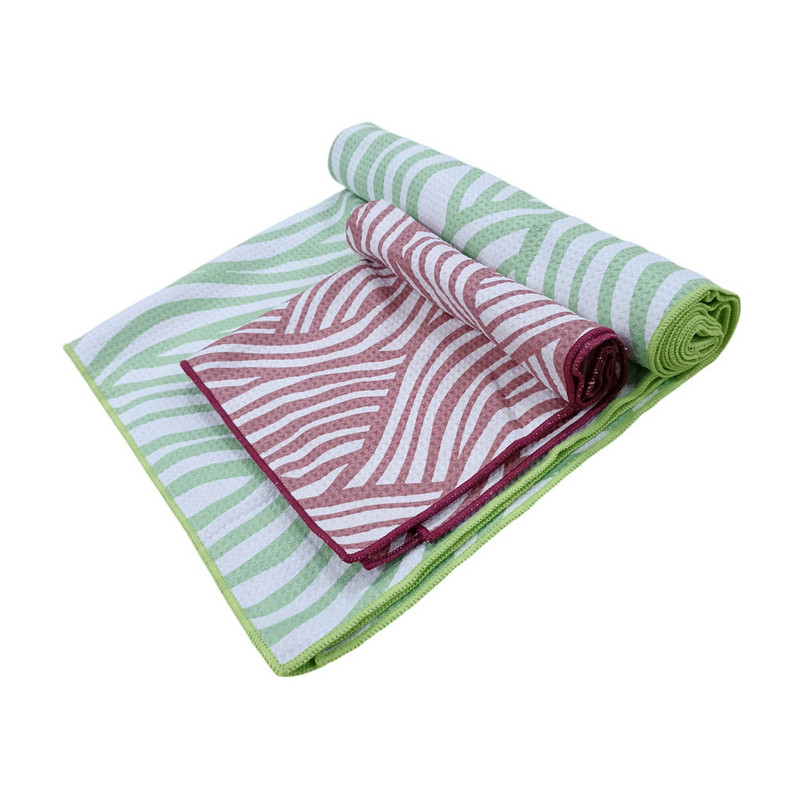If you are interested in some of our products, please feel free to visit our website or contact us for detailed information.
Sand-free beach towels are typically constructed using specialized synthetic fabrics designed to repel sand and dry quickly. The most common fabrics used include:
Microfiber:Composition: Microfiber is usually made from a blend of polyester and polyamide (nylon).
Properties: Microfiber is known for its fine fibers that create a tight weave, preventing sand from sticking to the surface. It is also highly absorbent, quick-drying, and lightweight.
Texture: It can be woven to be soft and smooth or slightly textured, depending on the specific design and intended use.
Polyester:Composition: Polyester is a synthetic polymer made from purified terephthalic acid (PTA) or its dimethyl ester dimethyl terephthalate (DMT) and monoethylene glycol (MEG).
Properties: Polyester is durable, hydrophobic, and resistant to shrinking and stretching. The tight weave of polyester fabrics helps in repelling sand and providing quick-drying capabilities.
Texture: Polyester can be engineered to feel smooth and comfortable against the skin.
Nylon:Composition: Nylon is a synthetic polymer, often known as polyamide.
Properties: Nylon is strong, elastic, and resistant to abrasion. It is also lightweight and quick-drying. When combined with other fibers like polyester, it enhances the overall durability and sand-repellent properties of the fabric.
Texture: Nylon can be woven into various textures, from silky smooth to more textured surfaces.

Key Characteristics of Sand-Free Beach Towel Fabrics:
1. Tight Weave or Knit:The fabrics are woven or knitted tightly to create a smooth surface that prevents sand from getting trapped between the fibers.
2. Hydrophobic Properties:These fabrics are designed to be hydrophobic, meaning they repel water. This characteristic not only helps in quick drying but also makes it difficult for sand to adhere to the towel when wet.
3. Lightweight and Compact:The synthetic materials used are lightweight and can be easily folded into a compact size, making them convenient for travel and outdoor use.
4. Durability:The synthetic nature of the fabrics makes them resistant to wear and tear, UV rays, and the harsh conditions of beach environments.
5. Easy to Clean:These fabrics are generally easy to clean and maintain. They can be machine washed and dried without losing their sand-repellent properties.
Examples of Sand-Free Beach Towel Fabrics:
Microfiber Towels: These are the most common and popular choice due to their excellent sand-repellent and quick-drying properties. They are often marketed as beach towels, travel towels, and sports towels.
Polyester Towels: Sometimes blended with other fibers like nylon to enhance their properties. These towels are durable and provide a good balance between comfort and functionality.
Nylon Blends: Used in high-performance towels where strength and elasticity are required. These blends are effective in repelling sand and provide a smooth surface.
In summary, sand-free beach towels are primarily made from synthetic materials such as microfiber, polyester, and nylon. These fabrics are chosen for their tight weave, hydrophobic properties, durability, and ease of maintenance, making them ideal for beach environments where sand and water are prevalent.








